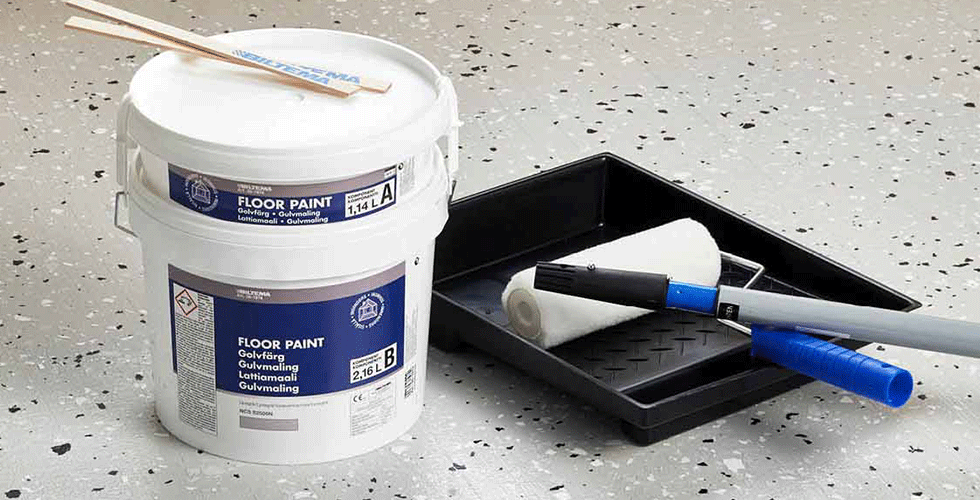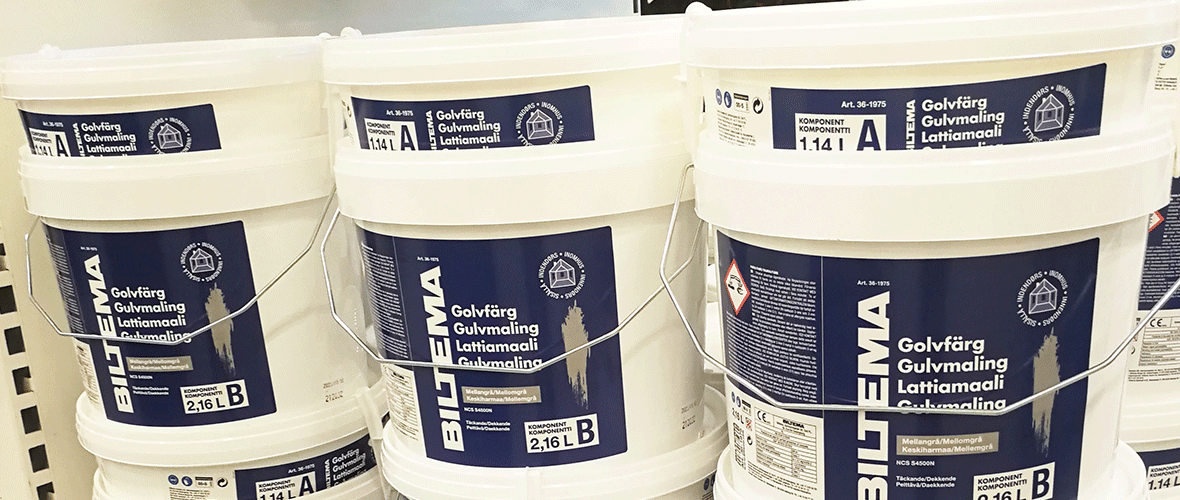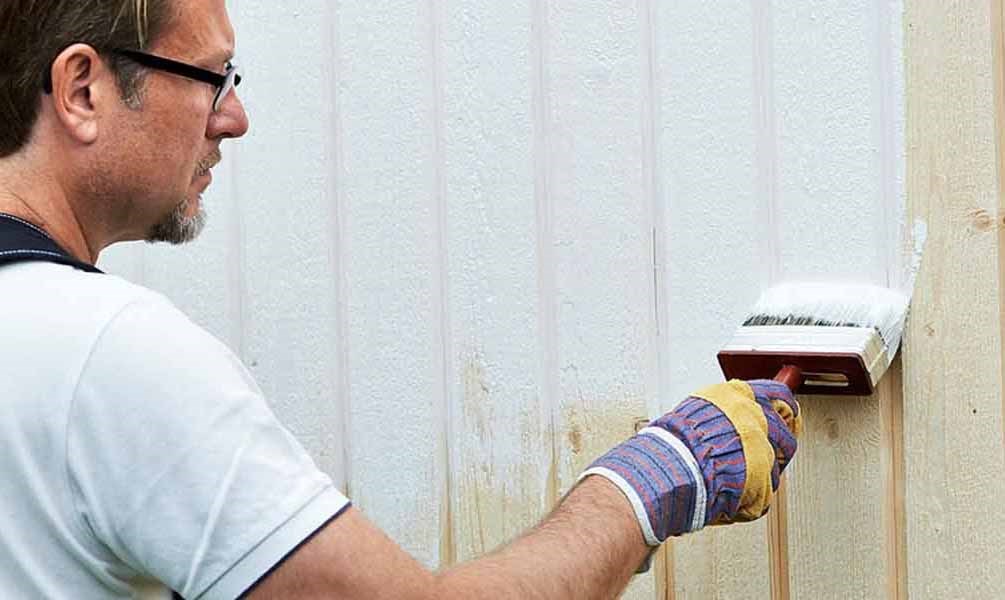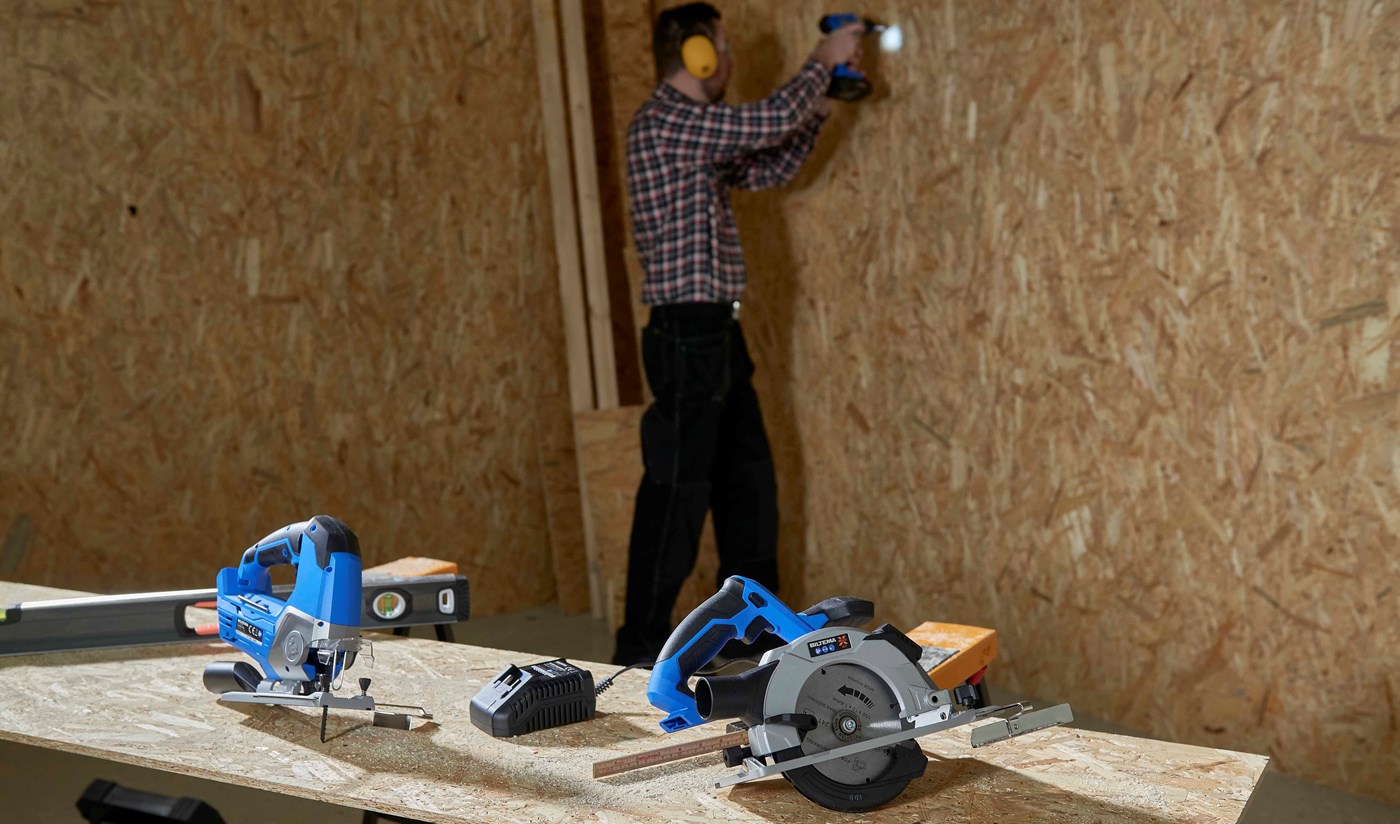How to Create Your Own Epoxy Floor with Biltema’s floor paint
Read further down in the article about what Biltema’s two-component epoxy paints can add to your flooring project.
Can I paint my epoxy floor myself?
When painting with epoxy paint in a professional setting, the employer must ensure that work with epoxy and isocyanate-containing products is only carried out by qualified persons with the requisite training who have been provided the right instructions to carry out the work correctly. The employer must also ensure compliance with environmental regulations.
As a private individual, you are allowed to paint with epoxy floor paint. So, you can carry out your floor project yourself, but it is something you should only do if you have good knowledge of what is required when painting a concrete floor/kitchen floor/workshop floor.
Epoxy typically has different drying times than ordinary water-based floor paints. So, do yourself a favour and take a look at our step-by-step guide below. But first, let’s answer a few questions about epoxy.
What exactly is epoxy?
Epoxy is an incredibly strong binder, and its high wear resistance makes the product popular. Epoxy consists of two components, a resin (base) and an accelerator (hardener). These two form an incredibly durable combination, which makes epoxy especially suitable as a floor paint. It’s important to know that epoxy paint is diluted with water, the same as Biltema’s epoxy flooring, unlike epoxy floor coating, which consists of pure epoxy (Biltema does not sell epoxy coating – only epoxy paint).
2-component epoxy paint or water-based floor paint?
Biltema has several solutions for your flooring project depending on the durability you want for your floor, as well as your budget. You can choose our slightly more expensive epoxy paints, or our water-based floor paint FLOOR for indoor use on surfaces with light wear. This paint is waterborne and versatile, and produces a semi-gloss surface.
In this article, we have chosen to focus on our most durable floor paint – the 2-component paints. So the steps you read below only apply to our 2K products in the range.
Areas of use for epoxy paints in our range
Biltema’s FLOOR, a waterborne, epoxy-based, 2-component paint and lacquer system, is suitable for concrete, wood, and fibreboard floors, and can be used to create a durable and even surface on floors in the home, garage, or in lightly trafficked industrial premises. The paint is available in two grey colour variants as well as in a clearcoat.
Biltema’s epoxy products have several advantages that are worth considering when choosing floor paint:
- Seamless and hygienic surface when painted.
- The surface is easy to clean.
- High chemical resistance.
- Very high scratch resistance and wear resistance.
- ... And epoxy products are easy to use.
Follow these steps when painting with Biltema’s epoxy paint:
Preparation and pre-treatment
NOTE! Important rules and preparations before you start creating your epoxy floor:
- Use protective gloves, protective clothing and safety glasses.
- Ensure good ventilation, so that moisture in the freshly painted floor paint evaporates before it hardens. If the humidity is above 85%, the surface may become matte and flared.
- Remember to turn off any underfloor heating before you start.
- If you paint on a new concrete floor it must have hardened for at least 2 weeks, be dry and free of dirt, oil, and the like. You must remove the cement skin by sanding, sandblasting, or cleaning with acid, for example.
- If you intend to paint over existing paint, the surface must be matte sanded and all loose paint must be removed.
Mixing and mixing ratios
Mix components A and B. Before mixing, make sure that you will be able to use the mixed material within an hour.
- When mixing an amount up to 1 kg: Mix by hand with a stirrer.
- More than 1 kg: Mix the material with a machine mixer or a low-speed drill with a suitable stirrer. That way your arms won’t get too tired. Also remember to use a splash guard to protect your clothes and eyes.
Make sure to mix the paint thoroughly to ensure proper hardening and function. Read more about mixing the paint on the product packaging.
Applying the epoxy floor paint
When the time comes to work with the product and paint the floor, it’s important that the paint is applied evenly and thinly. If too much paint is used and applied too thickly, there is a risk of water retention. Use a Mohair roller on an adjustable telescopic handle and you’re ready to paint the large surfaces. Also use a corner roller fir the sides and a brush in the corners of the room. Biltema’s epoxy paints must be applied in two coats.
Protect surfaces before painting
You probably can’t paint without spilling a little bit. So, it’s important to know that you can also find all the masking options you may need at Biltema.
Floor flakes and clearcoat
For an additionally decorative effect, you can use Biltema’s floor flakes for floor painting.
- Paint the floor in the colour you want and sprinkle the floor flakes in the wet paint as desired. After applying the second coat of floor paint, throw the flakes into the air and let them fall into the wet paint. Lightly sand with fine sandpaper after the paint has hardened.
- Then clean carefully before applying clearcoat as finish. The clearcoat must be applied in two coats.
Then there is only one thing left to do – wait for 24 hours, after which the epoxy floor will have hardened and you will have a brand new floor with a great wear resistance.

Epoxy is hazardous waste
While you wait, consider how to clean up after your painting project. Epoxy paints and epoxy lacquers are hazardous waste and require special handling because they contain substances that are harmful to the environment or humans.
Hazardous waste must be handed in to a recycling centre.
We hope you enjoy your new epoxy floor! And the best part is that you created it yourself.
Well done.




